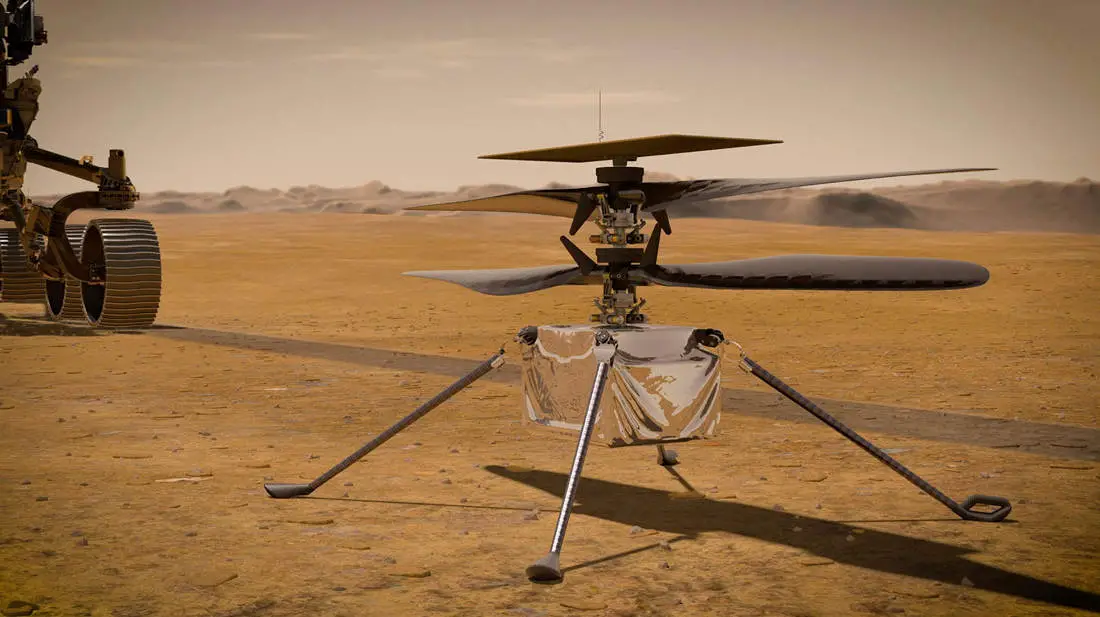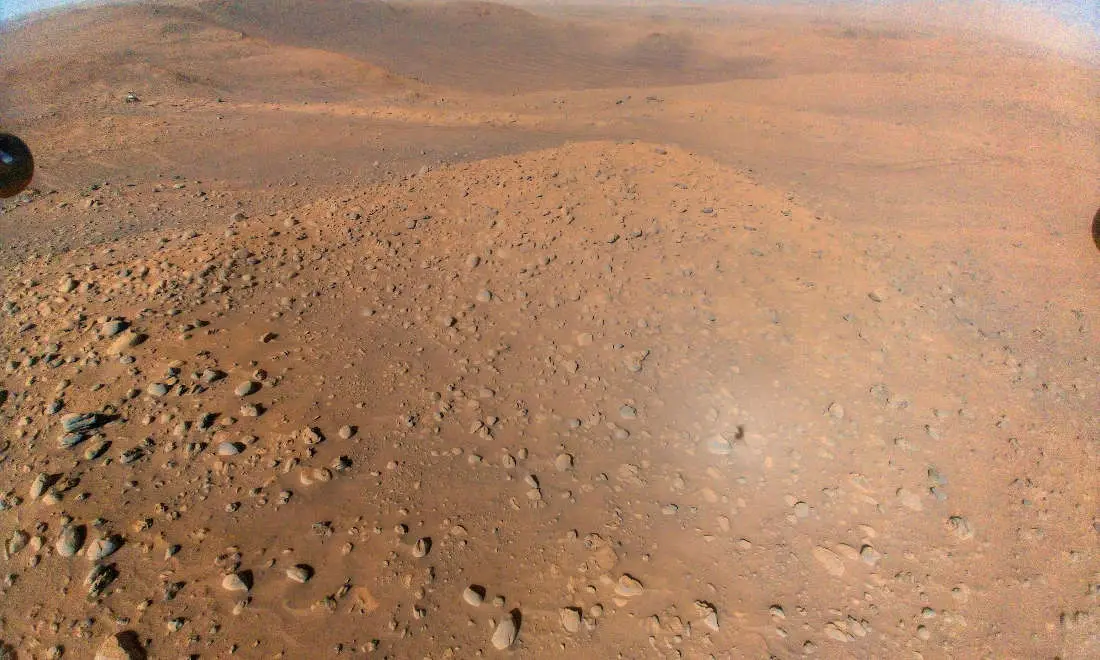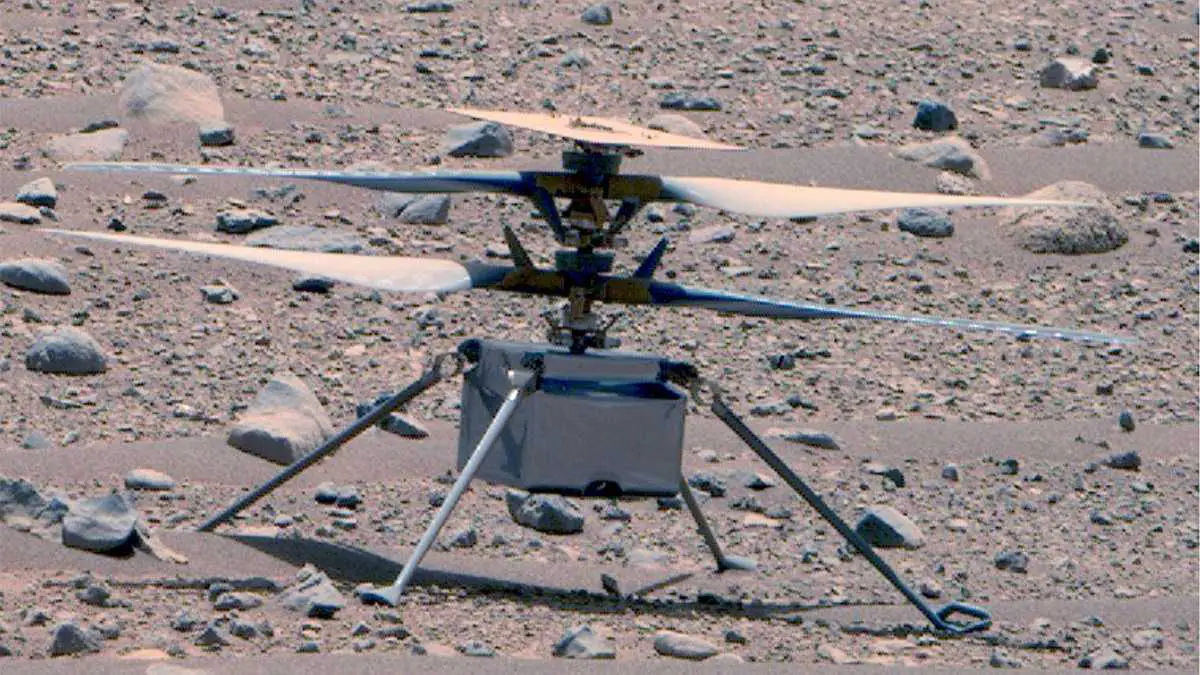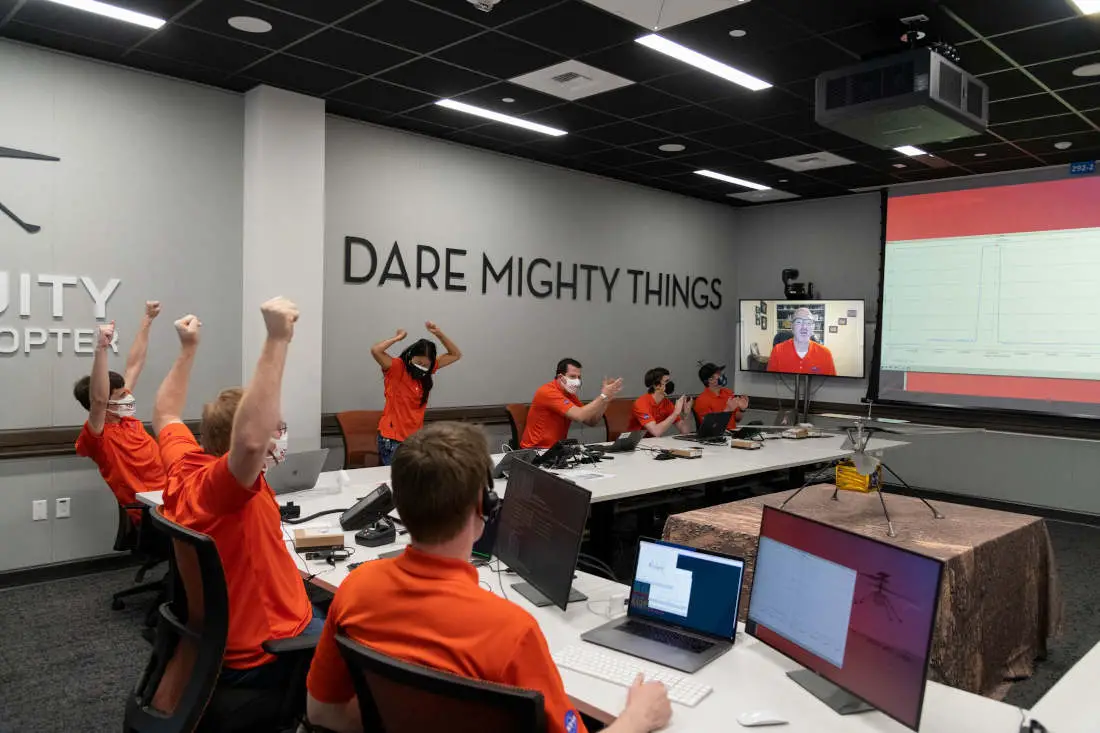Millions of kilometers away from Earth is a tiny helicopter the size of a coffee table. Known as Ingenuity (or Ginny for short), the mini-copter is buzzing around Mars. Ginny is tasked with the huge job of understanding flight on another world.
SEE ALSO: Google Maps Lets You Explore NASA’s ‘Black Marble’

“Helicopters can quickly travel long distances over tough terrain,” says Joshua Anderson, who leads Ginny’s operations team at NASA’s Jet Propulsion Laboratory (JPL).
“This makes them perfect for exploring Mars in ways that haven’t been possible with wheeled rovers.
However, Mars has an extremely thin atmosphere, making it an incredibly challenging place to lift off and stay in the air!”
Records Flying
Ginny landed on Mars inside the Perseverance rover back in February 2021. It was the first time a helicopter had been to Mars. Researchers were hoping to test how flight works on another planet.
“My favorite moment has been watching the video of Ingenuity’s first flight alongside the rest of the team,” says Joshua.
“We’d had plots and data that showed we had flown, but it didn’t sink in that we’d actually flown on another planet until we watched the amazing video the Perseverance team captured of the flight!”
At that stage, NASA only expected the helicopter to take to the Martian skies 5 times. However, 2.5 years later, it’s recorded more than 50 flights.

Ginny has also started helping scout ahead for Perseverance, regularly setting new records by flying higher and faster than before.
“Instead of being built with the electronic parts typically used to build spacecraft, Ingenuity was designed with parts more similar to what you’d find in a smartphone,” Joshua explains.
“Using these parts allowed Ingenuity to be light enough to fly on Mars. But we weren’t sure how tough they would be, or how long they would last in the cold Martian weather.
“Fortunately, they have been far tougher than we ever imagined, keeping Ingenuity flying even through the depths of our first winter on Mars.”

No Joystick required
The other cool thing about Ingenuity is how it flies itself.
The JPL team can send a list of locations for the helicopter to fly to, and then the onboard software can handle the rest. Ginny can also take photos, videos and audio of the Mars landscape while it flies. This is important, because Mars is just too far away to use remote control from Earth “It takes a long time for radio signals to reach Mars and back, sometimes up to 30 minutes,” says Joshua. “So it’s not possible for the team to directly pilot Ingenuity. By the time we receive any data back from a flight, the helicopter has already landed and the flight is long over.”

Future flights
Ginny has been such a success that NASA are considering sending more helicopters to Mars next time.
“We’re taking what we’re learning with ingenuity to help design both these and other future Mars helicopters,“ says Joshua.
The future mission will be called the Sample Retrieval Lander, and it would collect samples from the red planet to bring back to Earth.
“The Sample Recovery Helicopters may look a lot like Ingenuity, but include wheels and a small arm to pick up and return sample tubes to the lander,” Joshua explains.
Source: Double Helix (csiro.au)
More: What Natural Phenomenon Causes The Impressive Display of Polar Lights



Comments